Knitting with Knitout Side Post: Flipping Directions in Hand Knitting
This post is an addition to the blog post: Knitting with Kniout Part Three: Making Our Transfers.
As I was searching for stitch patterns online, I found that most of the tutorials for hand knitting involved a sequence of knit/purl operations for each row. The instructions confused me, and they may confuse those of you who also do not have experience with hand knitting. So hopefully, this blog post can clear up some of those confusions.
For example, for pique ribbing, the instructions look like:
Row1: *K2, P1*, K2
Row2: *P2, K1*, P2
Row3: *K2, P1*, K2
Row4: Knit All
Repeat 4 Rows until your piece is the length you desire.
(Note that K=knits=front knits, P=purls=back knits)
After reading the instructions and seeing what pique ribbing actually looks like, I realized the picture did not mirror what I was envisioning from the instructions.
We can observe from the instructions that Row 1 and Row 2 have alternating knits and purls for each column. But in the picture(left), it is clear that there is no alternating knits and purls. The instructions also state that Row 4 is a row of front knits. In the picture we can see that those "divider lines" are definitely back knits. Below we have what pique ribbing actually looks like on the left, and what our swatch would look like if we followed the instruction.
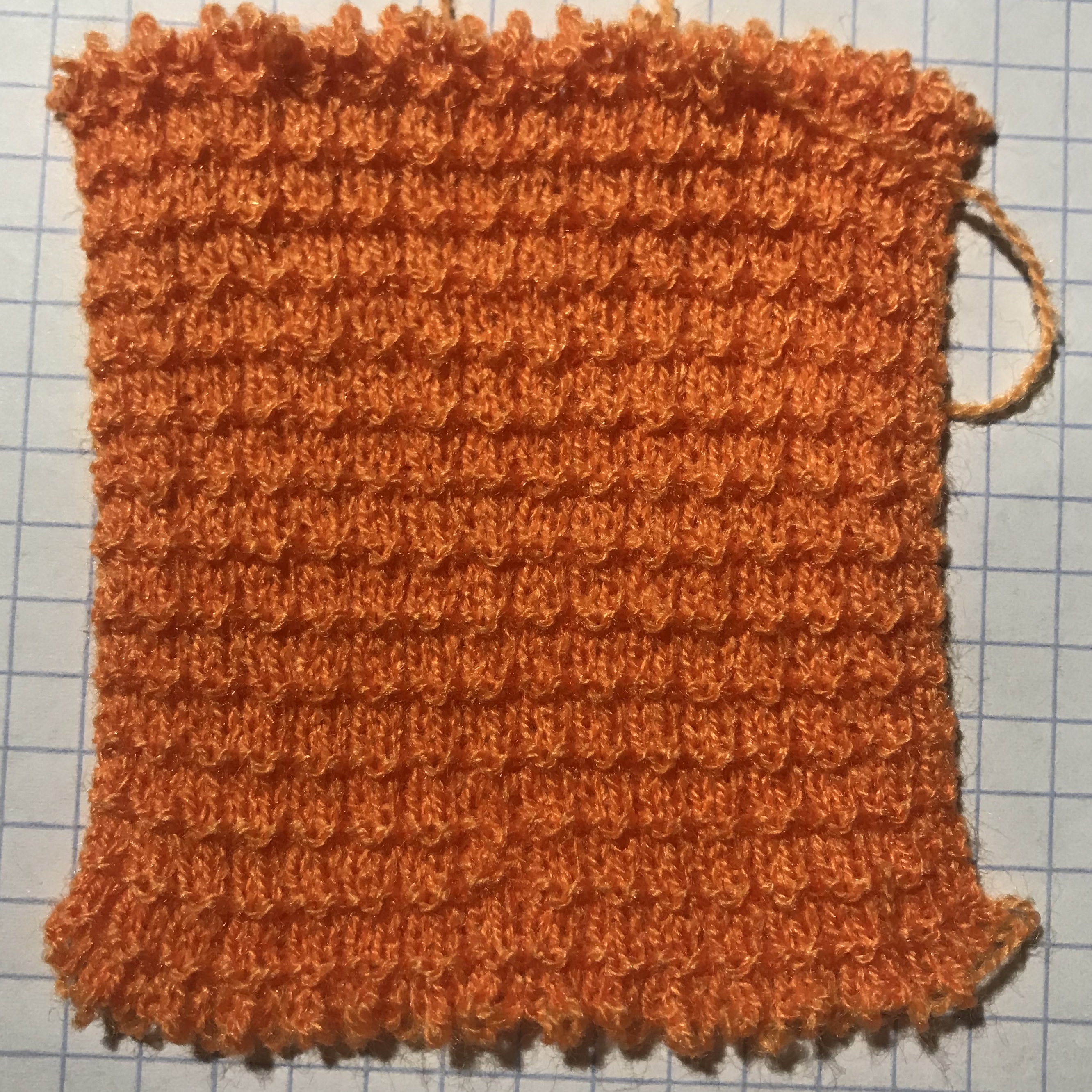
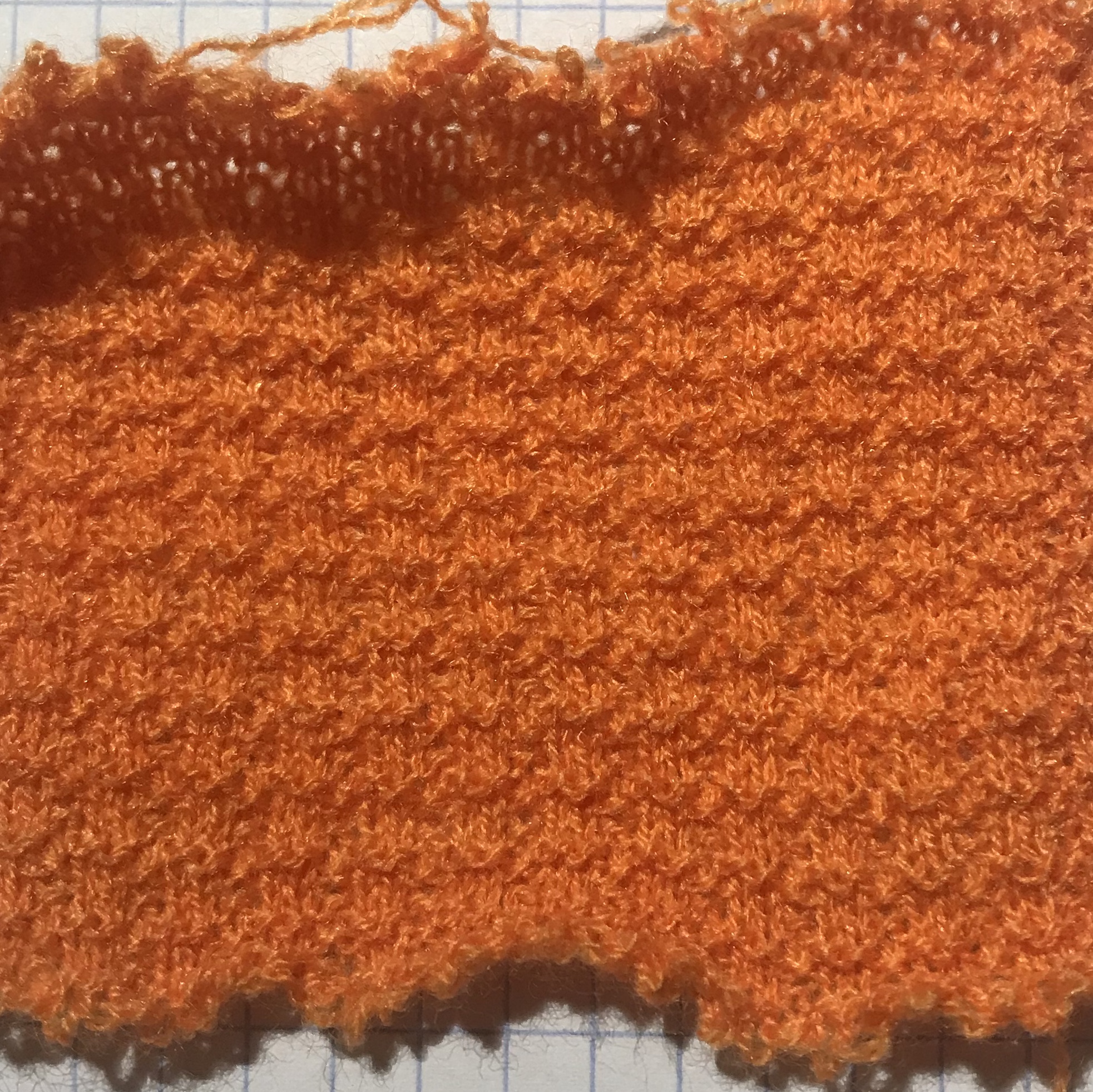
If you are currently as confused as I was, here is the the reason why.
First, let's look at this piece of flat knitting. Starting from the left, we have 2 columns of knits, 3 columns of purls, and another 4 columns of knits: an asymmetric arrangement of knits and purls.
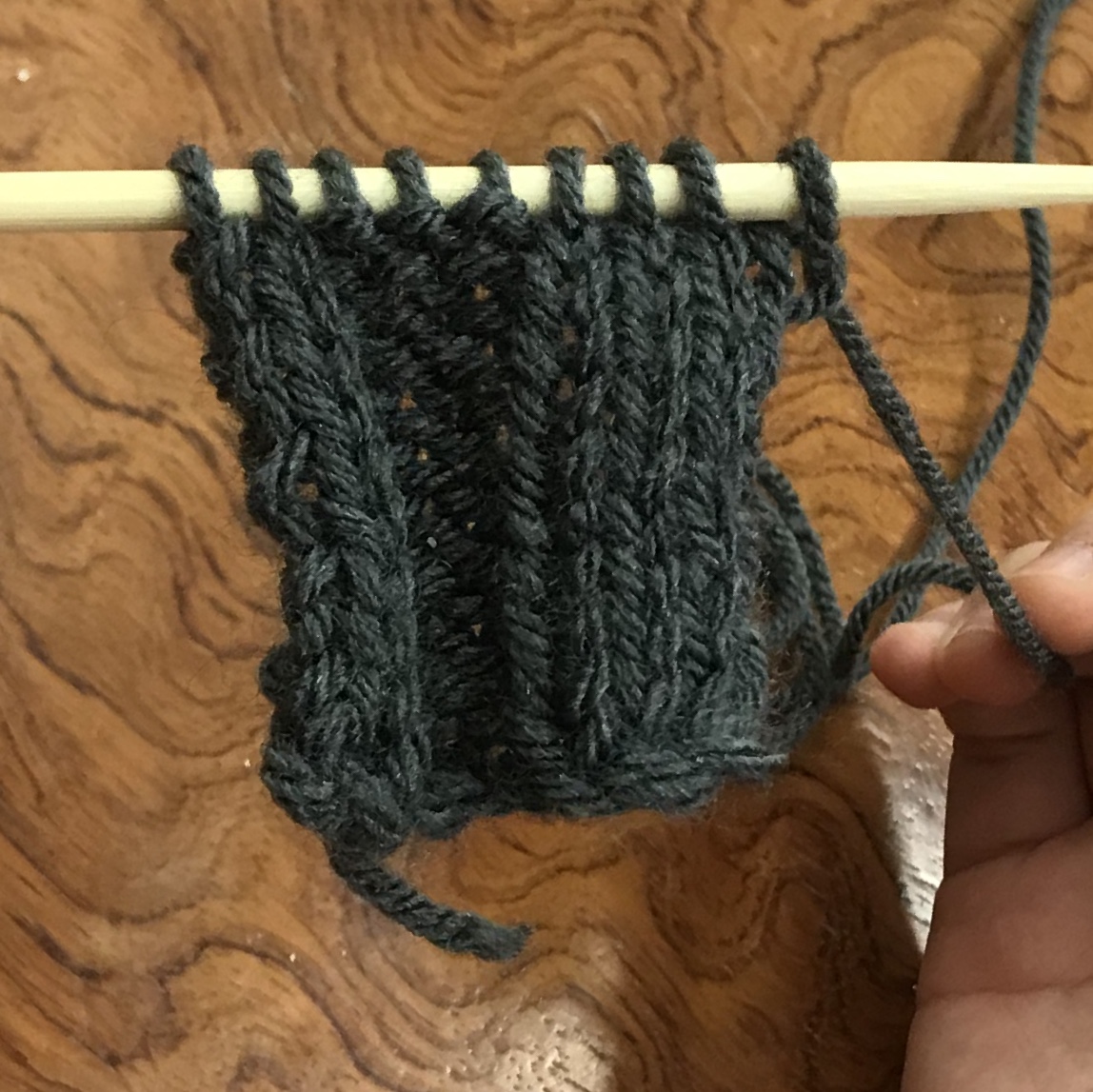
Below is a sequence of hand knitting motions:
-
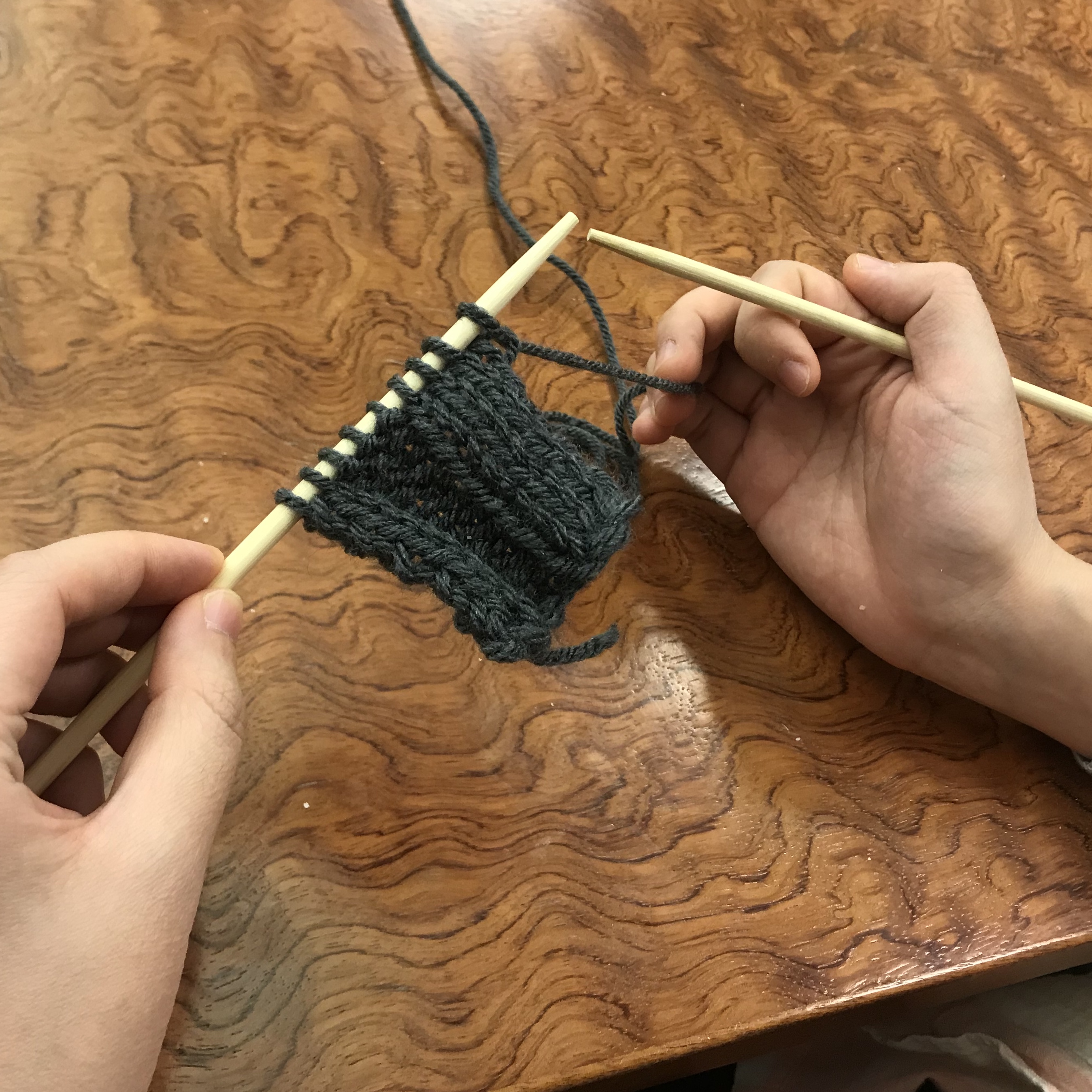
This is the "starting state"(same as the above picture): we see the fabric is on the left needle.
-
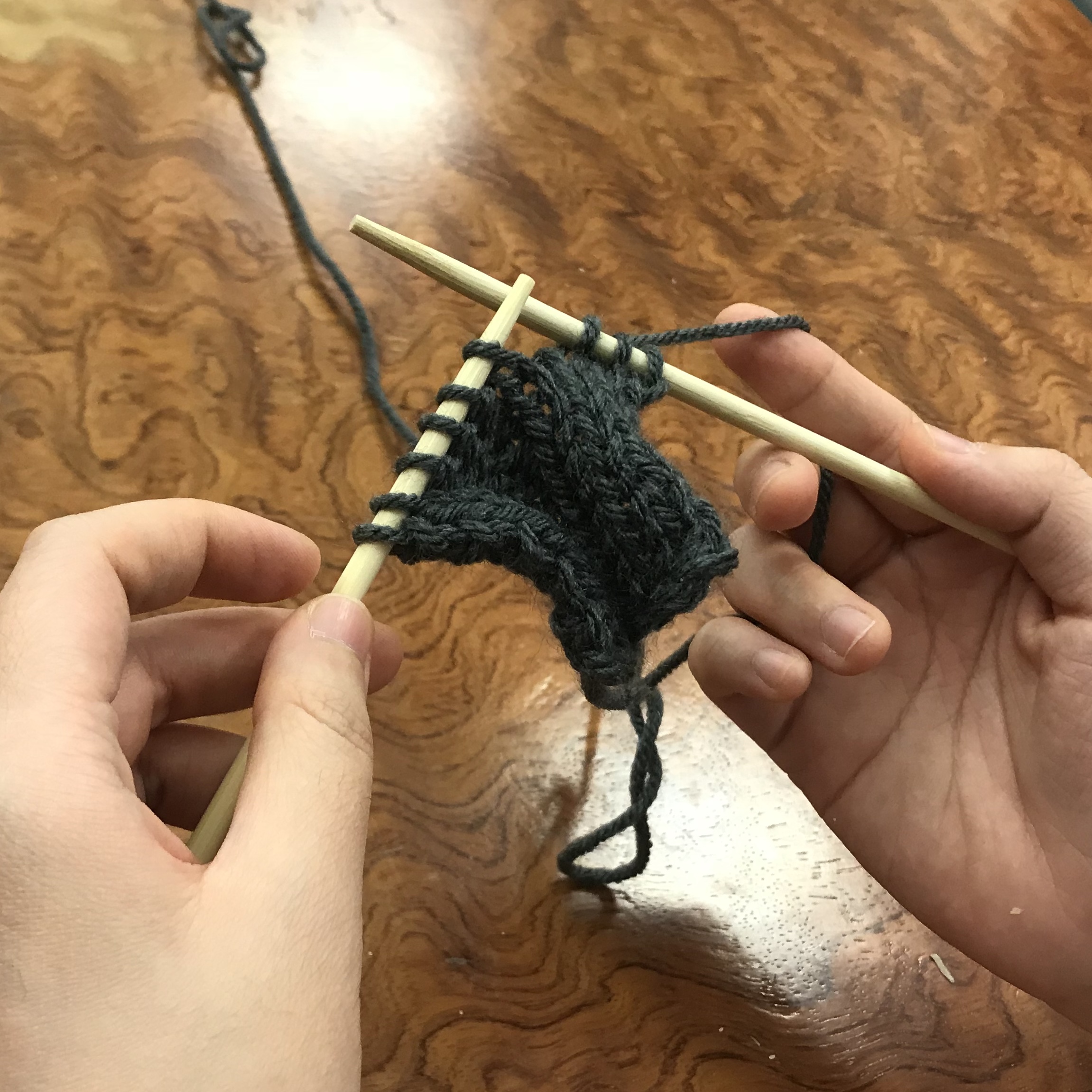
Next, we see some fabric is now on the right needle.
-
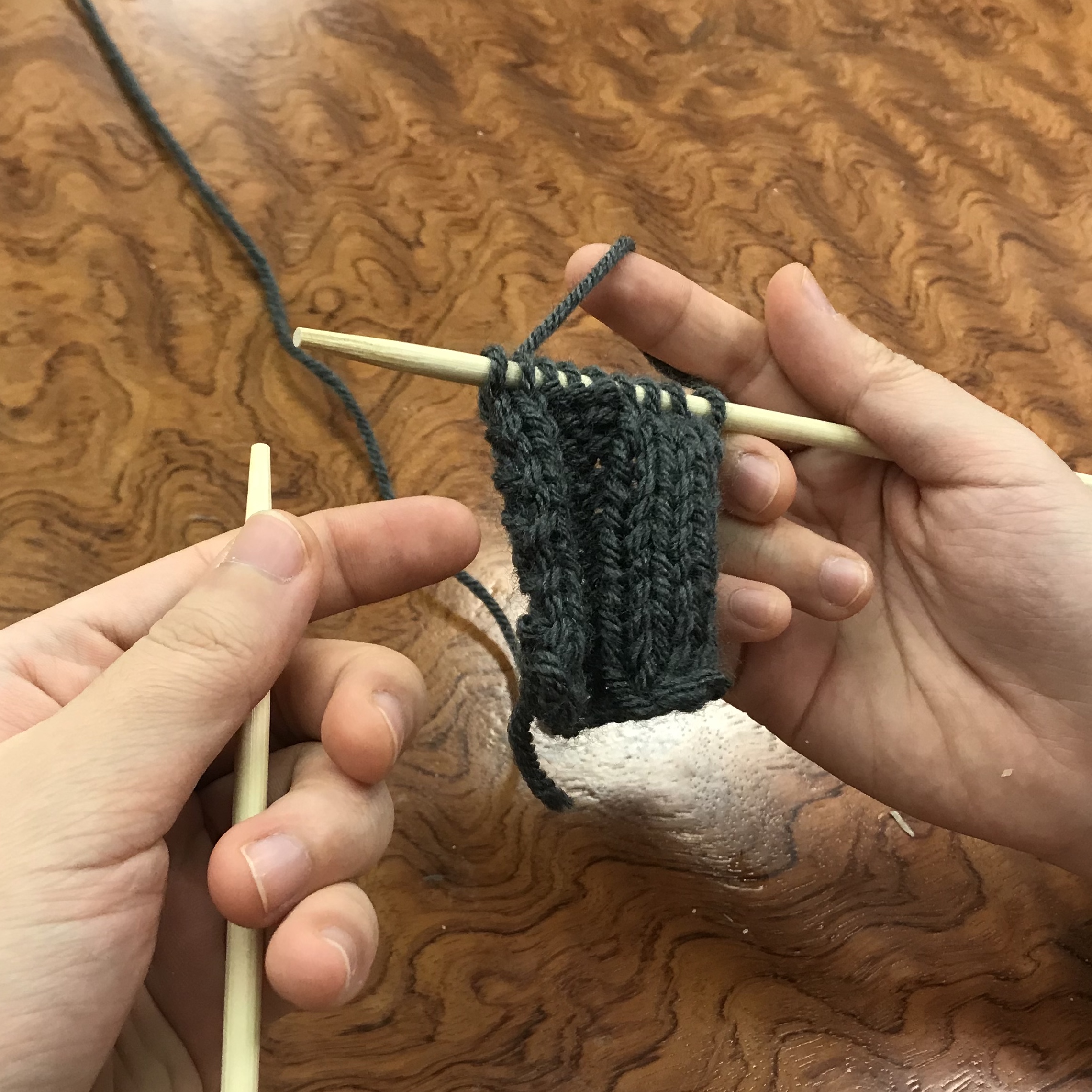
Then, the entire fabric is moved to the right needle. Notice that we still have the KKPPPKKKK pattern.
-
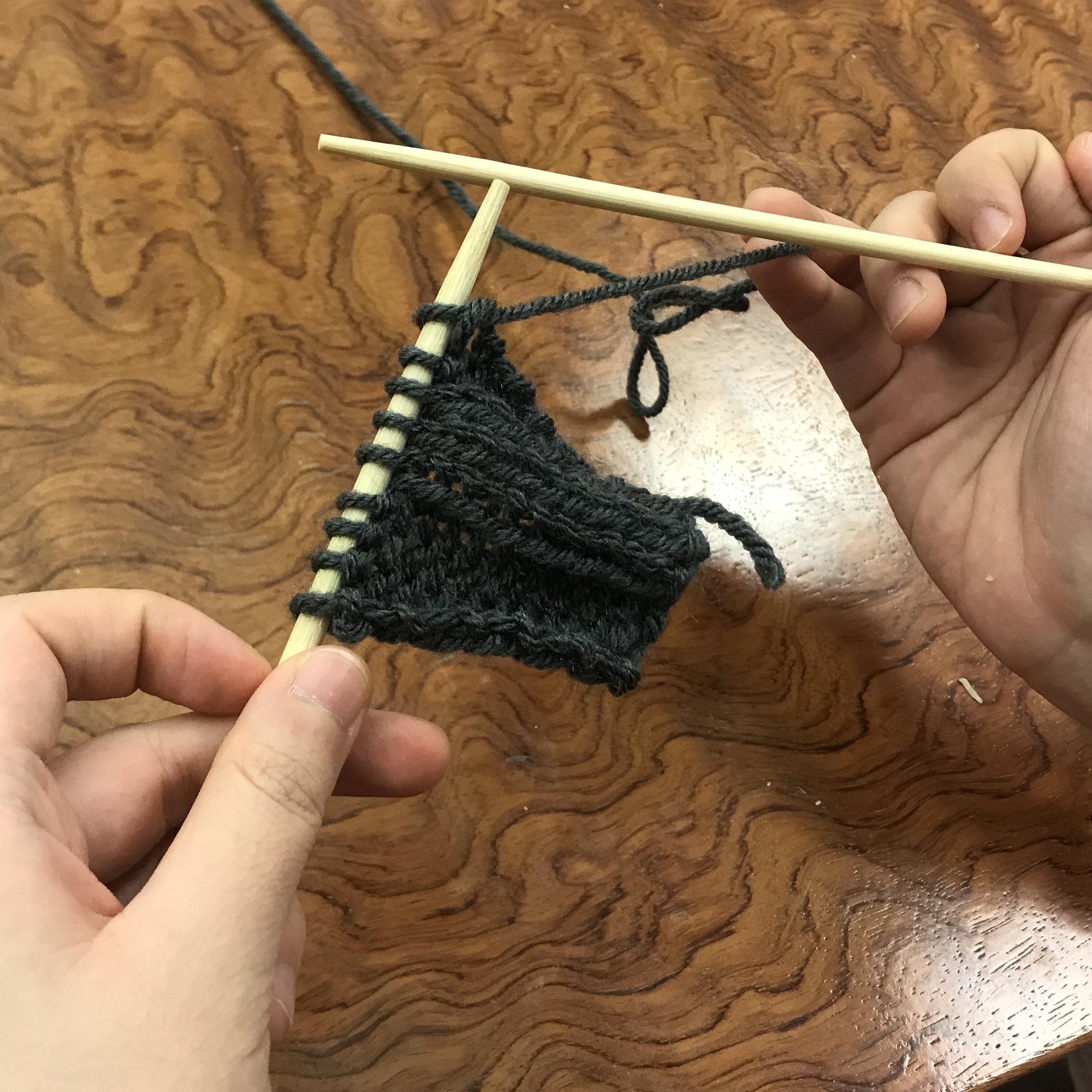
Finally, in order to continue knitting the next row, we flip the fabric, and the the needle that was originally in the right hand is now in the left hand. And now we have the PPKKKPPPP pattern.
Now, the fabric looks like this: Starting from the left, we have 2 columns of purls, 3 columns of knits, and another 4 columns of purls.
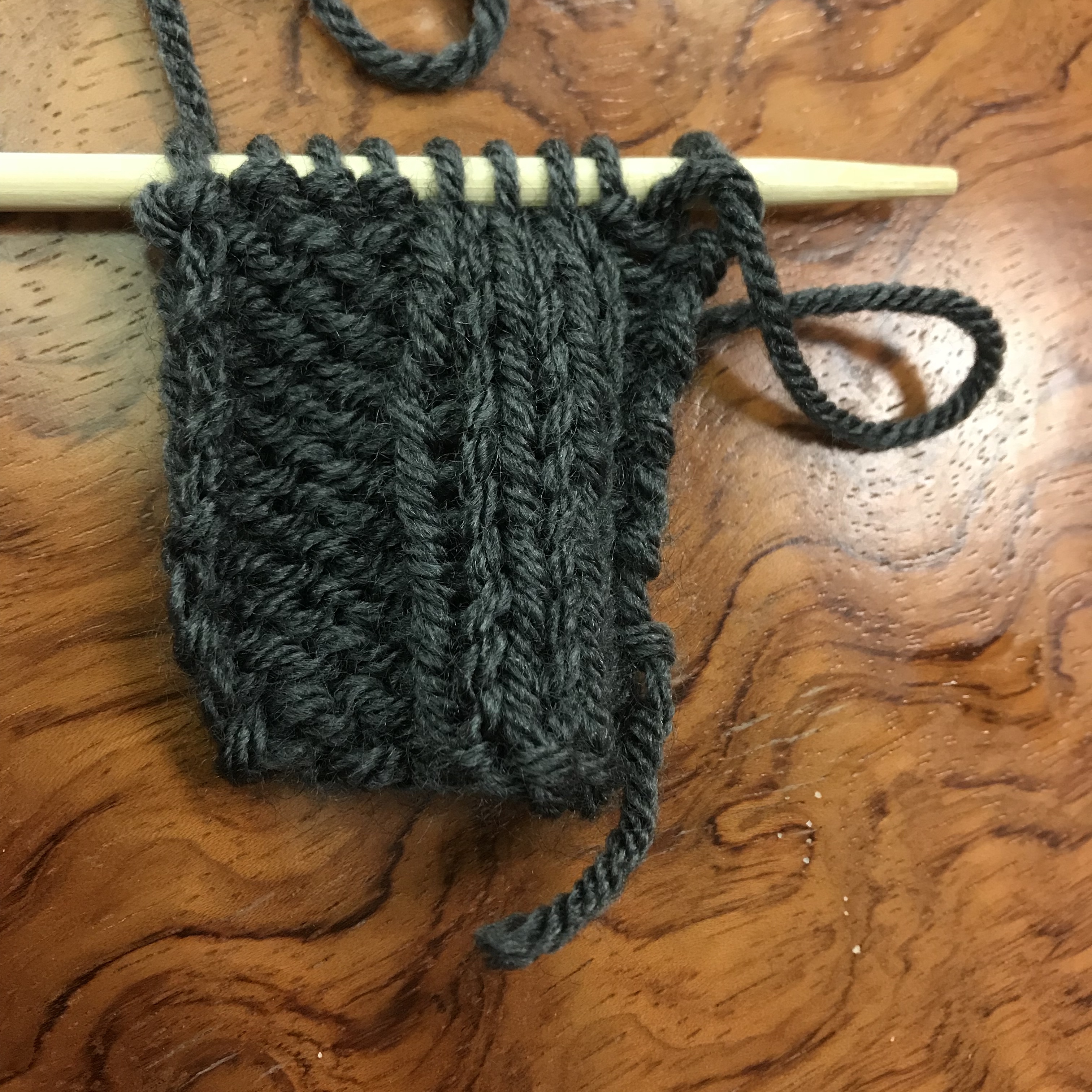
That being said, remember a front knit from the front is a back knit from the back, and a back knit from the front is indeed a front knit from the back. When we work with a knitting machine, we do not flip the fabric. As a consequence, the instructions for all the even rows are the opposite of what the hand knitting tutorial states.
So for knitout instruction, the correct instruction for pique ribbing is the following:
Row1: *K2, P1*, K2
Row2: *K2, P1*, K2
Row3: *K2, P1*, K2
Row4: Purl All
Repeat 4 Rows until your piece is the length you desire.
Therefore, when you see instructions online, double check if the instructions mirror what you envision and keep in mind the difference between machine knitting and hand knitting.
Also, these inconsistencies occur in word instructions. There are also pattern instructions in charts, which are often far less confusing and apply to both hand knitting and machine knitting(but always double check). Whenever you search for patterns, always try to find chart instructions (they do not always exist, but hey you learned how to convert them) to avoid confusion.